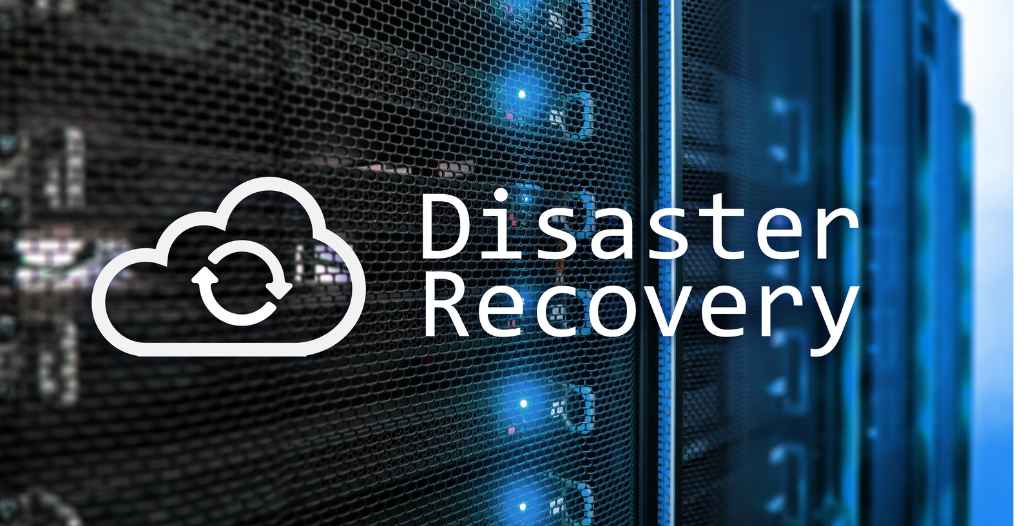Core Principles of Business Continuity
Business continuity pertains to the capacity of an organization to sustain its crucial operations or rapidly reinstate them when interruptions occur.
Table of Contents
ToggleWhether it’s a natural disaster, cyber-attack, or any unforeseen event, the ability to ensure business continuity can be the difference between a resilient organization and one that struggles to survive.
This article explores different approaches to ensure business continuity, highlighting its importance, strategies, and best practices.
The Importance of Business Continuity Planning
Business continuity planning is at the heart of organizational resilience. It involves the identification of potential points of failure and threats and the development of a crisis management plan to ensure that the entire organization or business can continue to function in the event of a crisis.
The significance of business continuity planning cannot be overstated, as it prepares businesses to face a range of disruptions, from natural disasters to IT infrastructure failures.
At its core, a business continuity planning process seeks to protect critical business functions from failure, ensuring that an organization can maintain operations and services even under adverse conditions.
This process not only safeguards the interests of employees and customers but also helps in meeting regulatory requirements and maintaining the reputation of the business.
Developing a Comprehensive Business Continuity Strategy
Effective business continuity strategies are pivotal in ensuring that an organization can withstand and quickly recover from disruptive events.
The key to a successful business continuity strategy lies in its ability to adapt to changing circumstances and have solutions in place for emerging threats.
Business Continuity Plan
A comprehensive business continuity plan is a roadmap for how an organization will continue its operations during and after a disruptive event.
The development of this business disruption plan involves several critical steps, starting with a business impact analysis.
This analysis helps in identifying critical business functions and the potential impact of their disruption. Following this, the plan should outline the processes and resources necessary to maintain or quickly resume these critical functions.
When developing a business continuity plan, it’s essential to consider the entire organization, including human resources, IT infrastructure, and third-party management solutions.
The plan should be detailed and flexible, capable of addressing a wide range of potential threats.

What Is The Role of Business Continuity Management?
Business continuity management extends beyond the creation of a plan. It encompasses the ongoing process of identifying, assessing, and managing risks that could disrupt the business.
Effective business continuity and crisis management plans involve a holistic approach, integrating disaster recovery, crisis management, and contingency planning.
The management of business continuity plans should not be an isolated function; it requires collaboration across various departments within the organization.
Employees at all levels, from top management to operational staff, need to be aware of and trained in their roles within the business continuity plan.
Risk Identification and Management
One of the first steps in a business continuity strategy is identifying potential risks. These potential threats can range from a few ways to be impacted by a natural disaster and cyber-attacks to supply chain disruptions.
Once identified, these risks should be regularly assessed, and processes developed to minimize their potential impact.
Diverse and Redundant Systems
Reliance on a single system or process can be a significant vulnerability. By diversifying and creating redundant systems at disaster recovery sites, especially in critical areas of IT infrastructure, organizations can ensure the continuity of normal services and maintain operations even if one system fails.
Employee Training and Awareness
Employees are often on the front lines when an unplanned business disruption occurs. Regular training and disaster recovery plan awareness programs can prepare them to respond effectively and protect business processes and services during a crisis or after a disaster.
Regular Updates and Revisions
The business environment is constantly evolving as is the risk from external threats. Regularly updating and revising the business continuity and disaster recovery plans ensures they remain relevant and effective in the face of new challenges.

Disaster Recovery as a Key Component of the Business Continuity Planning Process
Disaster recovery is an essential element of a business continuity program. It focuses specifically on the risk to IT system aspects of business continuity, ensuring that data, applications, and other technological resources are protected and can be quickly restored after an unplanned business disruption.
A robust disaster recovery plan should include:
-
Data backup solutions to prevent data loss through redundancy locally and storing data off-site.
-
Strategies for restoring IT systems and applications to a point in time or fully swiftly.
-
Protocols for switching to alternate disaster recovery IT infrastructure, like a hot site, in case of major disruptions.
-
Keeping third-party vendors informed of plans.

Business Impact Analysis in Continuity Planning
A business impact analysis (BIA) is a critical tool in business continuity planning. It helps to identify gaps and in evaluating the effects of disruptions on business operations.
The BIA informs decision-makers about which business processes and functions are critical and the potential impact if those functions were to be interrupted.
The analysis phase in BIA should consider:
-
The extent to which a disruption can affect different business functions.
-
The acceptable downtime for each critical function before it starts impacting the organization.
Validating Business Continuity Plans: The Necessity of Regular Testing and Drills
To truly safeguard an organization’s ability against unexpected disruptions, it is crucial not just to have a business continuity plan (BCP) but to rigorously test its effectiveness.
Regular testing and conducting drills play a pivotal role in ensuring that a BCP is not just a theoretical document but a practical, actionable strategy that can be deployed successfully during real-life crises.
Why Testing Matters?
-
Identifying Weaknesses: Testing uncovers potential weaknesses or gaps in the plan that may not be apparent on paper. This allows organizations to address these issues proactively. In case of data corruption, it may only be possible to recover to a point in time, which can help make decisions about checkpoint frequencies.
-
Improving Team Preparedness: Drills and exercises help familiarize the team with their roles and responsibilities during an emergency, leading to a more coordinated and effective response.
-
Enhancing Plan Realism: Testing in real-world scenarios can provide insights into how well the plan aligns with the actual capabilities and resources of the organization.
-
Building Confidence: Regularly tested plans build confidence among employees and stakeholders, assuring them that the organization is well-prepared for potential disruptions.
Testing Methods and Approaches for Success
-
Tabletop Exercises: In these sessions, team members gather to discuss and walk through various disaster scenarios in a structured, low-stress environment. This method is effective for testing the understanding of the plan and the decision-making process of the team. Even a small business can use this tactic.
-
Full-Scale Drills: These are comprehensive exercises that simulate a real-life disruption such as power outages as closely as possible. Full-scale drills test not only the plan itself but also the logistical, operational, and human response capabilities.
-
Component Testing: This involves testing individual components of the plan, such as data backup and recovery, communication systems, or specific operational areas, to ensure they function as expected.
-
Surprise Drills: Unannounced disaster recovery tests can provide a realistic assessment of how well an organization can respond to an actual emergency. These drills can be invaluable in understanding the immediate response capabilities and reflexes of the team and the robustness of the contingency plan. Drills also measure mean time to recovery to normal operations.
-
After-Action Reviews: Post-testing reviews are crucial for evaluating the effectiveness of the drill and the plan. These sessions should involve a thorough debriefing, discussing what worked well and what didn’t, and documenting lessons learned for continuous improvement.
Maintaining an Adaptive Plan:
-
Regular Updates: As the business environment for a given organization and organizational structures evolve, so should the business continuity and disaster recovery plan. Regular testing provides an opportunity to update the plan to reflect these changes.
-
Incorporating Feedback: Feedback from staff and stakeholders who participate in or observe the tests can provide valuable insights for refining the disaster recovery plan.
By regularly testing and updating the business continuity or disaster recovery plan, organizations can not only ensure that they are prepared for various disruptive scenarios but also foster a culture of resilience and readiness.
This proactive approach is integral to maintaining smooth operations and safeguarding the interests of all stakeholders in small businesses in the face of unforeseen challenges.

Adapting to Evolving Threats in Business Continuity
As the entire business and landscape changes, so do the challenges and threats they face. Adapting to these evolving threats is a critical aspect of business continuity.
-
Cybersecurity Threats: In the digital age, cyber-attacks have become one of the most significant threats to business continuity. Organizations must continually update their cybersecurity measures, including regular security audits, employee training on cyber threats, and robust incident response and recovery plans.
-
Global Supply Chain Disruptions: The interconnectedness of global supply networks means that a disruption in one part of the world can have ripple effects globally. Businesses should assess threats to critical functions and develop a business process to mitigate disruptions.
-
Climate Change and Natural Disasters: Increasing occurrences of natural disasters due to climate change necessitate that businesses incorporate climate resilience into their disaster recovery plans. This includes planning for a hot site to mitigate events like floods, power outages, hurricanes, and wildfires. Collaboration with bodies such as the National Fire Protection Association can improve readiness.
-
Regulatory Changes: Changes in regulations from a financial industry regulatory authority, especially in industries like finance and banking, can impact business operations. Staying abreast of regulatory requirements and incorporating them into the company’s business continuity plan is essential.
Business Continuity Plan Templates
A well-structured business continuity plan (BCP) is pivotal for any organization aiming to restore normal operations during and after a crisis.
Crafting a BCP from scratch can be daunting, but numerous templates are available to streamline this process and coordinate business continuity activities.
These templates provide a structured framework, ensuring that all critical aspects of a business continuity strategy are addressed comprehensively.
Here, we explore reliable sources for business continuity plan templates and how they can be utilized effectively.
Ready.gov
-
Overview: Ready.gov, an official website of the Department of Homeland Security, offers a variety of resources for business continuity planning.
-
Template Features: Their templates are designed to suit a wide range of businesses and include considerations in the event of disasters, cyber-attacks, and other disruptions.
-
Availability: Templates can be downloaded directly from the Ready.gov Business Continuity Plan page.
DRI International
-
Overview: Disaster Recovery Institute International is a recognized leader in business continuity education and certification.
-
Template Features: DRI International provides templates that are comprehensive and align with best practices and standards in the industry.
-
Availability: Access to their resources, including templates, can be found on the DRI International Resources page.
ISO
-
Overview: The International Organization for Standardization (ISO) sets globally recognized standards, including those for business continuity.
-
Template Features: ISO offers guidelines that can be used to structure a business continuity plan, ensuring alignment with international standards.
-
Availability: While ISO standards are not free, they can be purchased and downloaded from the ISO Catalogue.
BCI (Business Continuity Institute)
-
Overview: BCI is a global professional body that provides education through publications such as the BCI Good Practice Guidelines and similar resources in business continuity.
-
Template Features: BCI offers templates that incorporate current trends and best practices in business continuity.
-
Availability: Resources including templates can be accessed through the BCI website.
SCORE
-
Overview: SCORE is a nonprofit association dedicated to helping small businesses get off the ground.
-
Template Features: Their templates are particularly useful for small businesses and are designed to be straightforward to implement.
-
Availability: Business continuity plan templates can be downloaded from the SCORE website.
Utilizing Templates Effectively
-
Customization: It’s important to remember that templates should be adapted to fit the specific needs and structure of your organization.
-
Comprehensive Coverage: Ensure that the template covers all critical aspects of your business, including human resources, IT, back office, and communication strategies.
-
Regular Updates: Business continuity plans should be living documents, regularly updated to reflect changes in business processes and organizational structure.
By leveraging these resources, organizations can develop robust disaster recovery plans that are tailored to their specific needs, helping them to effectively navigate disruptions and maintain critical functions.
Shaping Business Continuity: Embracing Future Trends
Technological advancements, particularly in artificial intelligence and machine learning, are set to revolutionize business continuity.
These tools can enhance predictive capabilities, allowing organizations to develop a more robust business continuity management program.
A comprehensive business continuity plan reflects an organization’s business continuity activities, dedication to resilience, and commitment to stakeholders.
By focusing on such planning, businesses not only protect their operations but also strengthen trust with staff, customers, and partners, fostering long-term stability and success.





